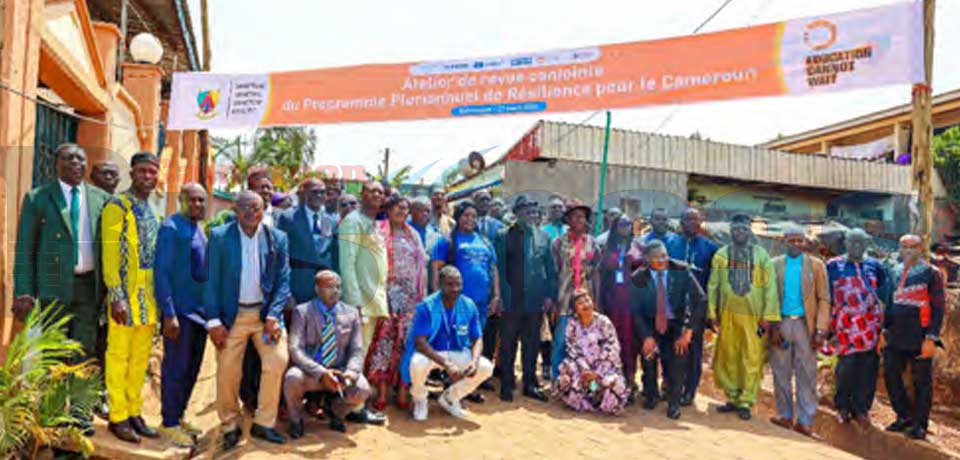Origins and purpose of AGOA For almost
two straight decades spanning the pe-
riod 1980-2000, most African countries
experienced a serious economic crisis
arising from a prolonged slump in wor-
ld commodity prices, sluggish economic
growth, erratic political and economic
governance, deepening poverty rates
and other regressive social indicators,
especially in health and education. The
international community, spearheaded
by the World Bank and the International
Monetary Fund, came to Africa’s rescue
with a more or less standard package
of pro-market economic reforms which
prioritized privatization of much of the
public and para-public economic sector and
recommended export-based development
strategies that appeared to have worked
miracles elsewhere in driving economic
growth and reducing endemic poverty. It
is against this backdrop that the United
States African Growth And Opportunity
Act (AGOA) came into being following
close to 10 years of efforts by pro-African
activist who lobbied for enhanced U.S.
engagement with and investments in Afri-
ca. Thanks to their sustained advocacy,
AGOA was adopted by the U.S. Congress
in the year 2000 and signed into Law the
same year by President Bill Clinton. It is
a preferential trade agreement which
unilaterally expands access to the U.S.
market for some African goods, increase
trade and investment between the U.S.
and eligible African countries, reduce and
eliminate tariffs for African exports of
different products, and promote economic
liberalization and human rights reforms
in Africa. First set to expire in 2008, AGOA
was later extended to 2015, and extended
yet again in 2015 for another 10 years.
Initially, 34 countries were included in the
list of beneficiaries, a list which changes
with each annual review by the U.S. Ad-
ministration of which countries should
be eligible.
Country and product eligibility : The
AGOA portal (www.AGOA.info) lists
the conditions or criteria established
(unilaterally) by the U.S. Administration
for the countries and products covered by
AGOA.. The criteria are heavy on political
and economic governance values which
the U.S. believes to be best attributes
and practices for promoting democracy,
human rights, rule of law, open-market
economies, etc. Anyone familiar with
the structural adjustment programmes
(SAPs) of the 1980s will not fail to note
some strong similarities between SAPs
and the AGOA eligibility pact. These crite-
ria, which are reviewed unilaterally each
year by the U.S., have hardly changed
since the inception of AGOA, which leaves
the impression that African states have
little or no leverage over the U.S. policy
conduct of the programme. Indeed AGOA
is somewhat unique in that it is a non-reci-
procal, non-negotiated preferential trade
arrangement, which may therefore qualify
as a sort of humanitarian handout by the
U.S. to Africa. As such the potential scope
for negotiating an upgrade of AGOA to
an even more effective trading scheme
for boosting Africa’s economic growth
might be lost under present arrangements.
With respect to product eligibility, AGOA
preferences currently apply to about 6,500
U.S. tariff lines, including some 5,000 lines
currently covered by the U.S. Generalized
System of Preferences (GSP), plus tariff
lines added by the AGOA legislation. To
summarise, four main sectors including oil
and other energy-related products, textiles
and apparel, transportation equipment,
and minerals and metals, account for over
90 % of African exports to the U.S. under
AGOA. As can be noted, African countries
have fairly limited comparative advantage
in those four sectors covered by AGOA
benefits, with the possible exception of
oil and other energy-related products.
Africa’s major agricultural products and
raw materials are not covered (as yet)
by AGOA treatment and benefits. Indeed
much of the tariff reduction under is for
non-agricultural commodities while agri-
cultural goods imported from the eligible
countries account for less than 2% of total
U.S. agricultural imports according to data
sourced from the World Trade Organization
and the U.S. Department of Agriculture.
Yet, agriculture being Africa’s economic
mainstay, any trade arrangement that
sidesteps the agriculture sector, as cur-
rently noted under AGOA, is bound to
have little or no impact on promoting
economic growth and industrialization,
and reducing Africa’s poverty rates – which
happen to be AGOA’s solemn goal. This
issue should therefore qualify for consi-
deration at annual AGOA Forums.
Africa’s trade performance under AGOA:
Since 2000 when AGOA was enacted, Afri-
ca’s overall economic performance has
been much better than in the previous two
lost decades. But that uptick in economic estimates at 30% per annum; and China
overtook the U.S. in 2008 as Africa’s premier
trading partner. These and other factors
have been the main forces underlying
Africa’s improving economic prospects
since AGOA’s inception.
But the foregoing analysis in no way be-
littles the significance of AGOA to African
economies. Notwithstanding Africa’s sur-
ging trade with China, the U.S. remains
Africa’s major trading partner whose
imports from Africa have consistently
outstripped in value and volume its ex-
ports to the continent since AGOA was
enacted. U.S. imports from the region
as a whole grew from less than USD
25 billion in 2000 to upwards of USD 80
billion in 2008 before declining annually
to their 2000 level or so, partly due to
the adverse effects of the global financial
crisis, as depicted in figure 2 above on
aggregate trade flows between Africa
and the U.S. from 2000 to 2016. But the
share of AGOA ingredient (AGOA-eligible
imports) in those figures has varied widely
from one country to another, from almost
100% for Chad (oil exports) in 2016 to 11%
for Cameroon, less than 1% for Ivory coast
and Senegal, 70% for Kenya, and 83% for
Nigeria for example. The U.S.- Africa trade
pattern since the onset of AGOA and the
overall weak performance of the region
in utilizing the opportunities offered by
AGOA would seem to suggest some serious
growth appears to have been due less to
AGOA’s trade and development impact
than to other factors at play within Africa
itself but also at global level. Firstly, the
virtual collapse of communism in 1990 as
a dominant ideological force led to the
convergence of economic development
theories around the supremacy of capitalism
and « the magic of the marketplace », to
quote former U.S. President Reagan. So
African countries as a whole had little choice
but to embrace pro-market reforms partly
encouraged by international debt-relief
programmes. Secondly, Africa appeared to
have been rewarded by the relative decline
in the 1990s of violent conflicts on the
continent, making the region increasingly
attractive for foreign direct investment
flows, notably in the petroleum exporting
countries. Thirdly, the growing economic
clout of some emerging economies, China
more particularly with its vast appetite
for Africa’s commodities, whipped up
world commodity prices on a sustained
basis, thus contributing significantly to
boost the economic growth trajectory
of Africa’s mostly commodity-dependent
economies. Indeed, China’s ever increasing
engagement with Africa since 2000 has
been such that the volume of its trade
with Africa has been growing by some structural weaknesses in African econo-
mies, particularly their limited industrial
organization, infrastructure challenges,
and unfriendly business environments,
including corruption. These factors tend
to inhibit their capacities to derive optimal
benefits not only from AGOA but also from
the global trading system more generally,
including Africa-EU Economic Partnership
Agreements (EPAs).
AGOA is fundamentally an OPPORTU-
NITY to be seized by eligible African
countries to boost quota-free and duty-
free exports to the U.S. But that cannot
happen without an industr...
1 minute is enough to subscribe to Cameroon Business Today Digital!
-
Your special Cameroon Business Today issue in digital version
-
Inserts
-
Exclusive calls for tenders
-
Preview (access 24 hours before publication)
-
Editions available on all media (smartphone, tablets, PC)

















Commentaires